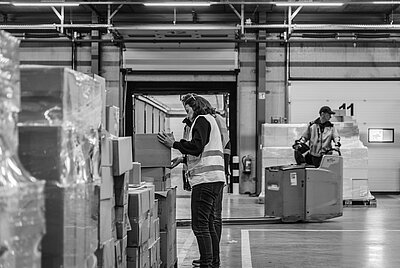Retailers should recognise that browsing and buying are just two parts of the equation. Far more online carts are abandoned when customers start to think about the logistics of their purchase. Uncertain delivery times, and restrictions on where products can be dropped off, can leave customers stranded at home. Faced with that prospect, when there is childcare, fitness and work to consider, it is easier to close the browser and look elsewhere. You have probably done it yourself.
Shoppers want more flexible delivery options
Evidence backs this up. While the average cart abandonment rate was 77% in 2020, it was highest for mobile phones – where more shopping is done on the move – and lowest on traditional computers, which will be more frequently used at the delivery address.
This disconnect between the simplicity of the mobile buying experience, and the complexity of delivery, will be one factor in the $18bn cost of sales lost to abandoned carts each year.
Traditional remedies for cart abandonment have focused on improving the funnel or truncating the route to conversion, but that won’t work when the consumer’s issue lies in the last mile. That is why brands that want to minimise lost sales need to take a leaf out of real-world stores’ books, where buying and receiving happen in the same place. So, if consumers are shopping on their way to work, delivery to work shouldn’t be an issue. If their daily schedule takes them to the gym, that should be a pick-up option. And, if they are heading on holiday, why not deliver to their hotel for when they arrive?
Outside of the current pandemic, we are increasingly living mobile and less predictable lives, to the extent where we don’t want to be tied down to a single location. Neither do we want to arrive home to find that the only thing delivered was a ‘sorry we missed you’ card.
Look beyond the buy button
Focusing almost entirely on the buying processes, while understandable, addresses only one part of the convenience equation. Brands that claim they didn’t know this already are doing themselves a disservice.
In 2018, a Retail Week survey of 2000 consumers revealed that while 70% wanted more flexible delivery options, almost one in five retailers “offered customers absolutely no flexibility to their delivery requirements after an order has been placed”. This reinforced findings of the previous year that, at a minimum, “retailers should offer deliveries that are within an hour of a requested, time, date and location”.
Covid has reinforced this, as consumers adapt their shopping habits to cope with the pandemic. “Many customers have… tried new omnichannel models,” reported McKinsey in May 2020. “Buy online, pick up in store (BOPIS) grew 28 percent year-over-year in February compared with 18 percent in January, and grocery delivery is up by 57 percent. More important, many of these new engagement models are here to stay. Consumers report high intention to continue using models such as BOPIS (56 percent) and grocery delivery (45 percent) after the pandemic.”
Easy shopping shouldn’t be hard work
Customers’ expectations will continue to become more demanding and, post-pandemic, fulfilling them will require brands that may have little in common – like hotels and retail stores, or online shops and gyms – to start working together. In doing so, they will develop what Olivier Chiono, product management director of retail technology platform Cegid, calls unified commerce.
“In unified commerce, the retailer seeks to break down channel silos and deliver consumers a coherent and frictionless shopping experience across all touchpoints. This is essential to deliver on customer expectations, while also enabling the retailer to capture new sales without eroding profit margins.”
Cegid, which works with luxury fashion brands Chanel, Paul Smith and Manolo Blahnik
among others has identified unbalanced product placement within supply chains as a key issue of the current market disruption. Too many items in stores, while the same line sells out online was a key issue for many fashion brands during lockdown. Making those products more mobile would have eased the bottlenecks and reduced the impact of the disruption.
It could also be the key to simplifying the buying process for mobile consumers. Brands that take care of the inconvenient side of shopping themselves – by owning the responsibility for getting the product to the customer, rather than expecting the customer to be in a specific place at a set time – are the ones that are set to thrive when shopping returns to some form of normality.
If you need some assistance in getting the most out of your supply chain, get in touch by email at online@worldpack.eu or call Worldpack on +31 (0) 88 494 20 80.


